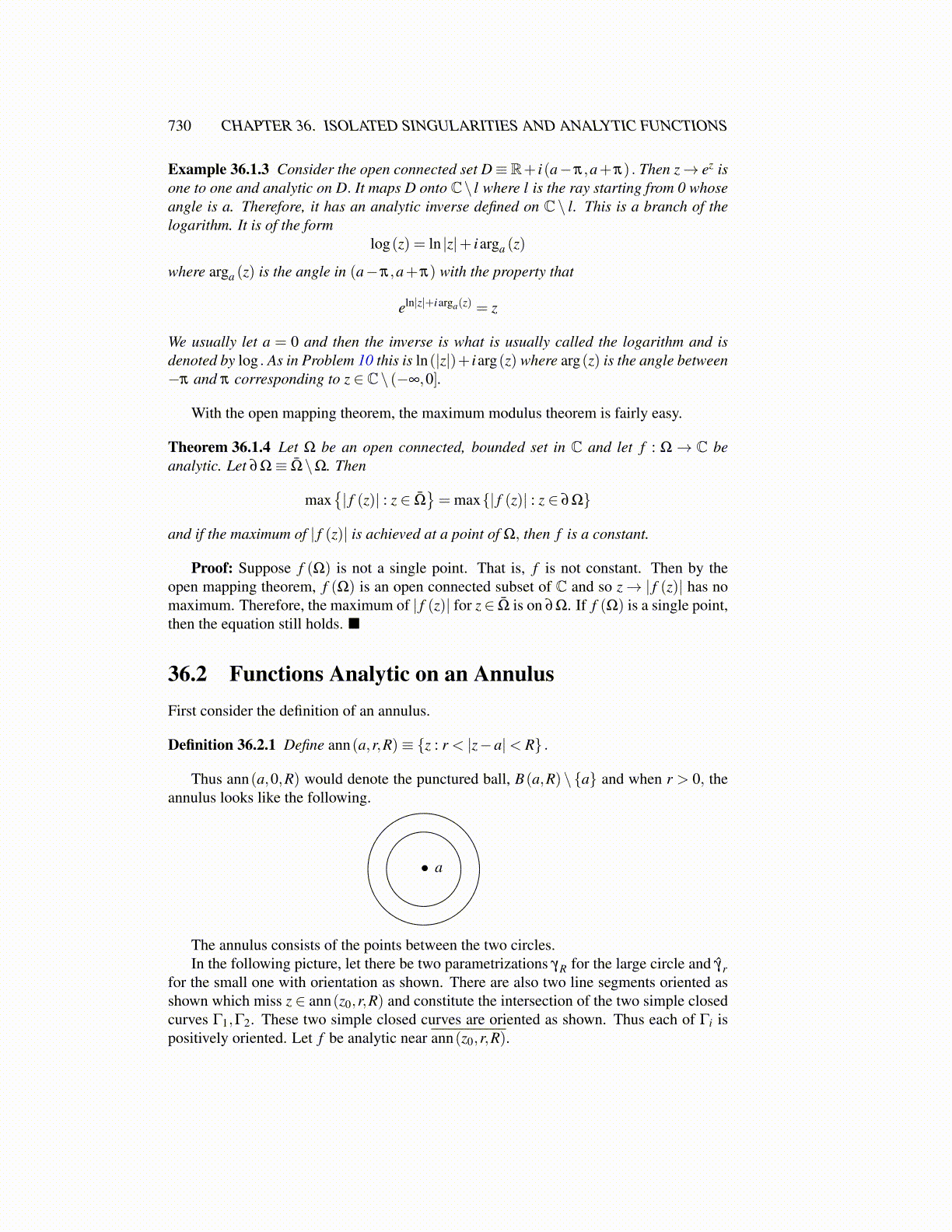
730 CHAPTER 36. ISOLATED SINGULARITIES AND ANALYTIC FUNCTIONS
Example 36.1.3 Consider the open connected set D≡R+ i(a−π,a+π) . Then z→ ez isone to one and analytic on D. It maps D onto C\ l where l is the ray starting from 0 whoseangle is a. Therefore, it has an analytic inverse defined on C \ l. This is a branch of thelogarithm. It is of the form
log(z) = ln |z|+ iarga (z)
where arga (z) is the angle in (a−π,a+π) with the property that
eln|z|+iarga(z) = z
We usually let a = 0 and then the inverse is what is usually called the logarithm and isdenoted by log . As in Problem 10 this is ln(|z|)+ iarg(z) where arg(z) is the angle between−π and π corresponding to z ∈ C\ (−∞,0].
With the open mapping theorem, the maximum modulus theorem is fairly easy.
Theorem 36.1.4 Let Ω be an open connected, bounded set in C and let f : Ω→ C beanalytic. Let ∂Ω≡ Ω̄\Ω. Then
max{| f (z)| : z ∈ Ω̄
}= max{| f (z)| : z ∈ ∂Ω}
and if the maximum of | f (z)| is achieved at a point of Ω, then f is a constant.
Proof: Suppose f (Ω) is not a single point. That is, f is not constant. Then by theopen mapping theorem, f (Ω) is an open connected subset of C and so z→ | f (z)| has nomaximum. Therefore, the maximum of | f (z)| for z∈ Ω̄ is on ∂Ω. If f (Ω) is a single point,then the equation still holds. ■
36.2 Functions Analytic on an AnnulusFirst consider the definition of an annulus.
Definition 36.2.1 Define ann(a,r,R)≡ {z : r < |z−a|< R} .
Thus ann(a,0,R) would denote the punctured ball, B(a,R) \ {a} and when r > 0, theannulus looks like the following.
• a
The annulus consists of the points between the two circles.In the following picture, let there be two parametrizations γR for the large circle and γ̂r
for the small one with orientation as shown. There are also two line segments oriented asshown which miss z ∈ ann(z0,r,R) and constitute the intersection of the two simple closedcurves Γ1,Γ2. These two simple closed curves are oriented as shown. Thus each of Γi ispositively oriented. Let f be analytic near ann(z0,r,R).